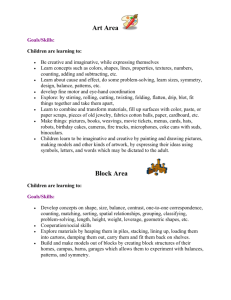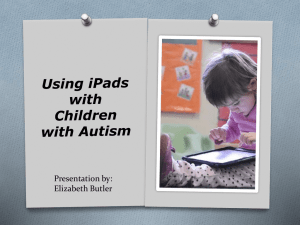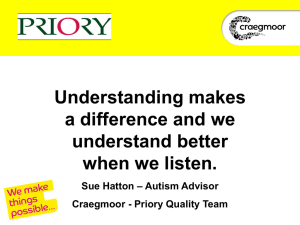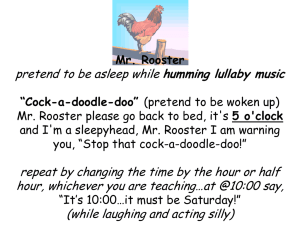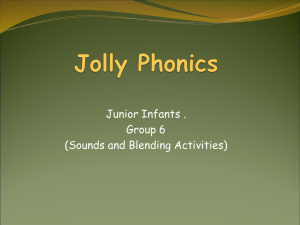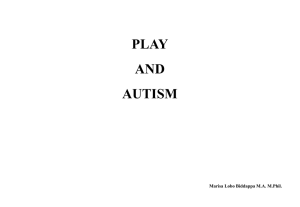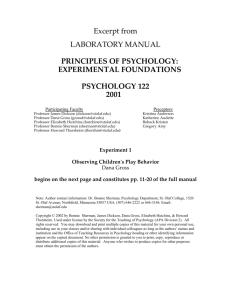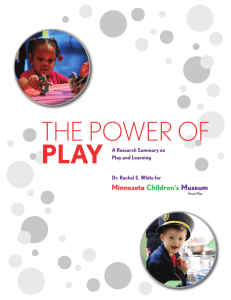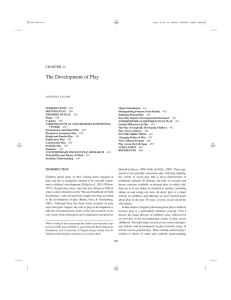Social Stories - Team Heroes Sports
advertisement
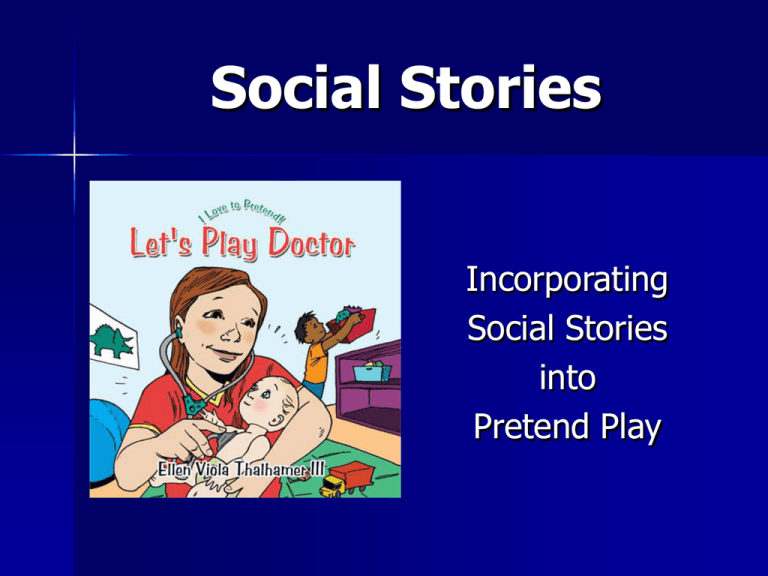
Social Stories Incorporating Social Stories into Pretend Play What is a Social Story ? Individualized short stories Help a child interpret information/situations Help a child to plan the steps of an activity Background Created by Carol Gray in 1991 Social Stories can be used with…. Everyone! Most commonly used with Children with Autism. Also beneficial for children with social disabilities, bilingual students, typically developing students, students needing PT/OT, students with a speech delay, children with ADHD/ADD, children with OCD, adults with autism, etc. Theory of Mind Impairment in perspective/social understanding (hard time seeing things from any other perspective than their own and difficulty in certain social situations) Have difficulty with understanding another person's beliefs, thoughts, point of view. Difficulty determining the intentions of others and how their behavior affects others Social situations are unpredictable which can lead to withdrawl and isolation from social situations Also known as mind blindness Simon Baron-Cohen, Alan M. Leslie and Uta Frith, in 1985, published research that suggested that children with autism do not employ a theory of mind According to Leslie, theory of mind plays a role in the deficits children with autism have with childhood pretend play because it effects their capacity to mentally represent thoughts, beliefs, and desires, regardless of whether or not the circumstances involved are real. Benefits Describes social cues Improves social skills and prepares the child/adult for new social situations Breaks down a challenging social situation into steps Helps a child to understand rules and routines and become familiar with the situation Breaks down a pretend play activity to outline the steps in performing the activity through text and pictures Increases appropriate responding Increases social understanding Provides the child with the self-esteem and confidence to participate in an activity. Prompts socially appropriate behavior Presents information in a clear, concise, and consistent manner with accurate and structured information on what is happening When To Use Social Stories The ways in which social stories can be used is endless. A creative teacher can use them to teach just about anything. Examples Of Social Story Topics Brushing teeth Washing hands Playing with a friend Taking turns Sharing a toy Greeting friends Joining a social activity Joining a conversation Pretend Play Playing board games Preparing for a sleepover Going to the supermarket Preparing for a trip Going on an airplane Taking a bus Expressing frustration Asking for a break Using the bathroom Going to the doctor Playing with a sibling What to do when someone pushes you Eye contact waiting my turn Interrupting Figures of speech Asking questions Calling out Voice control Respect Putting away laundry Making a sandwich Going to a birthday party Getting your period Getting dressed Dating Going to the movies Sitting appropriately Playing soccer (or another sport) Being polite Manners Doing homework Understanding emotions Saying sorry Keeping hands to yourself Walking appropriately Eating at the table Watching TV Standing too close Using deodorant Tying shoes Cleaning my room Picking my nose Brushing my teeth Taking a bath Getting a haircut Saying I Love you Lying Types of Social Stories Books Read the story and discuss/act out Interactive Perform actions and complete certain tasks in the story, while reading, in order to learn a skill Creating Social Stories Decide your audience/type of learner What Skill(s) would you like to address What Sentence structure do you want to use How will you evaluate its effectiveness/fade it out Sentence Structure/Format Simple language Simple and consistent pictures 1 step per page Sentence Structure Descriptive Sentences objective, most frequently used (WHAT) Perspective sentences statements that describe something from someone else's viewpoint (WHY) Cooperative sentences describe how another person will help the student Directive sentences help the reader to identify a suggested/appropriate response or choice in a particular situation (PROMPTS THE BEHAVIOR) Affirmative sentences express a commonly shared opinion Control sentences are statements written by the student to identify personal strategies for handling a situation Fading out It is important to fade out a social story gradually as the child becomes knowledgeable in the skill area Decreases prompt dependency In addition the social story should be used across many situations/people in order for the child to generalize the skills taught in the story to other people/situations I Love to Pretend! Social Stories By Ellen Viola Thalhamer III About the books: “I’m a Daddy” and “Let’s Play Doctor” are social story books that were created in order to teach children with autism how to pretend play. For children who are learning to pretend play and socially interact with their peers, these books will be helpful in guiding them through the motions of pretending to be a daddy or a doctor. For those parents/teachers who focus on generalization, and receptive and expressive language, real life pictures associated with the stories have been added to the back of the books. Book Information: Website: www.ILovetoPretend.com Email: ILovetoPretend@hotmail.com References Baron-Cohen S, Leslie AM, Frith U (1985). "Does the autistic child have a 'theory of mind'?" (PDF). Cognition 21 (1): 37–46. doi:10.1016/0010-0277(85)90022-8. PMID 2934210. http://ruccs.rutgers.edu/~aleslie/BaronCohen%20Leslie%20&%20Frith%201985.pdf. Retrieved 2008-02-16. Leslie, A. M. (1991). Theory of mind impairment in autism. In A. Whiten, Ed., Natural theories of mind: Evolution, development, and simulation of everyday mind reading. Cambridge, MA: Basil Blackwell. Thalhamer III, Ellen Viola. I Love to Pretend! I’m a Daddy. Bloomington, Indiana: Author House, 2010. Thalhamer III, Ellen Viola. I Love to Pretend! Let’s Play Doctor. Bloomington, Indiana: Author House, 2010. The Gray Center. (unknown). Carol Gray. Retrieved October 12, 2010, from The Gray Center for Social Learning and Understanding: http://thegraycenter.org/ssocialstories/carol-gray Wikimedia Foundation, Inc. (2010, September 27). Social Stories. Retrieved October 12, 2010, from Wikipedia The free Encyclopedia: http://en.wikipedia.org/wiki/social_studies Wallin, Jason. (2004). Social Studies. Retrieved October 12, 2010, from Polyxo.com Teaching Children with Autism: http://www.polyxo.com/socialstories/

